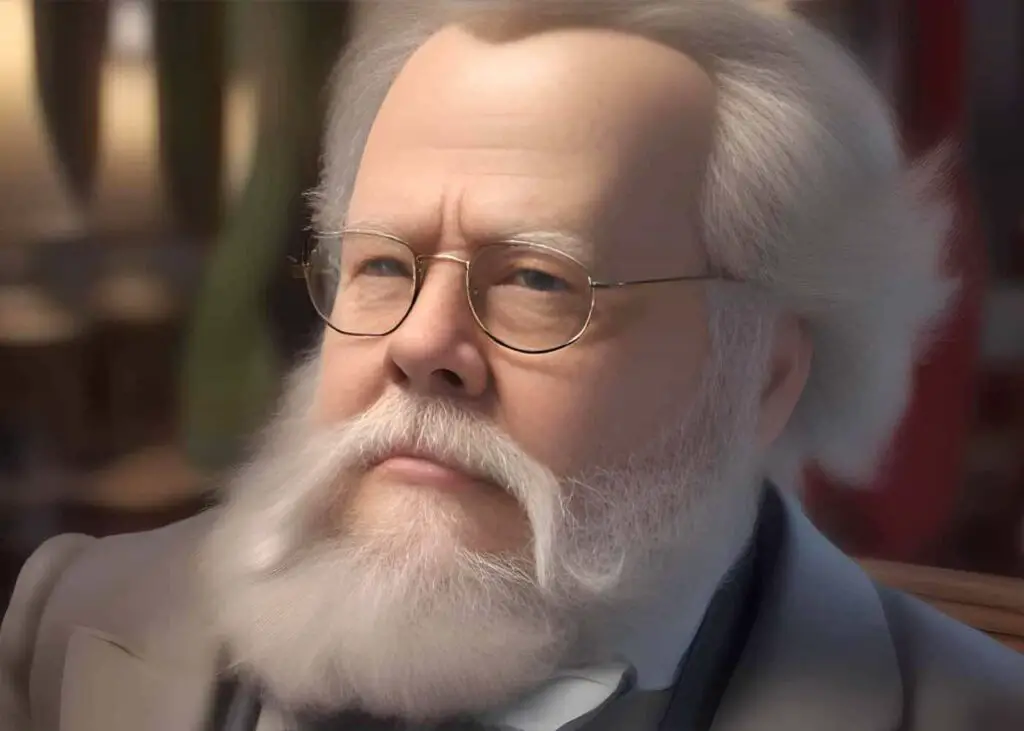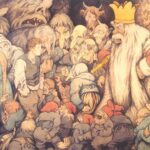
Henrik Ibsen Works: A Comprehensive Guide
Henrik Ibsen, a towering figure in the pantheon of theater, is widely recognized as a pioneer of modern drama. With his Norwegian origin, Ibsen crafted plays that transcended national boundaries, resonating with audiences worldwide. His works are notable for their realistic portrayal of psychological conflicts and contemporary issues, establishing him as a central figure in the transition from 19th-century melodrama to the plays of modern consciousness.
Ibsen’s careful examination of the human condition, societal norms, and the struggle for identity reflects in his characters, who are often complex and multifaceted. The depth of his characters and the intricacies of their interactions contribute to the enduring relevance of his plays. He has penned iconic works such as A Doll’s House, wherein he examines the societal constraints imposed on women, and Hedda Gabler, a brilliant study of ambition and despair.
Through his mindful innovation in both content and form, Ibsen challenged the theatrical status quo. His works remain seminal studies of the societal structures and personal dynamics that continue to shape modern drama. As a Norwegian playwright, Ibsen’s influence extends beyond his homeland, affirming his status as a leading light in literature and a steadfast architect of theatrical realism.
Jump straight to Henrik Ibsen Bibliography.
1. Life and Background
1.1. Early Life and Career
Henrik Ibsen was born on March 20, 1828, in Skien, a small Norwegian town. He was the eldest of his family’s five children. During his early years, Ibsen’s family experienced financial hardship, which greatly influenced his perception of the middle class and is reflected in his later works.
In 1844, Ibsen moved to Grimstad to become an apprentice pharmacist. This period allowed him time to become engaged in creative writing. It was during these formative years that he wrote his first play, Catiline, which, though not successful, marked the beginning of a prolific career in theater.
Ibsen’s connection with Norwegian theater grew once he moved to Christiania (now Oslo) in 1850. Here, he began writing plays in earnest and working in the theater as a stage director and playwright. His experiences here integrated him into the world of drama and helped solidify his role in the Norwegian arts.
Throughout his early career, Ibsen developed a reputation for his realistic prose and critical stance on societal issues, characteristics that would define much of his later work.
1.2. Later Years
During the later years of Henrik Ibsen’s career, his work continued to exhibit the characteristics of realism and psychological insight that had defined his earlier plays. After decades of residence in various countries across Europe, Ibsen returned to Norway in 1891 where he would reside until his death. The city of Oslo, a place of significant change and culture, became his home.
Ibsen’s later works, particularly after 1890, exhibit a deepened focus on the individual’s need for self-realization. This period includes well-known plays like The Master Builder (1892), Little Eyolf (1894), John Gabriel Borkman (1896), and When We Dead Awaken (1899), his final play. These works continued to challenge societal norms and explored complex internal conflicts.
Throughout his last years, Ibsen’s health began to deteriorate. After a series of strokes, his productivity declined notably. In 1906, he was confined to his home in Oslo due to illness. Throughout this time, Ibsen’s contributions were recognized as he was often visited by other prominent intellectuals and writers honoring his substantial influence on modern drama and theatre.
The later years of Ibsen’s life marked a period of both personal struggle and professional triumph. The themes of self-examination and existential inquiry remained central to his works, solidifying his position as a key figure in shaping the course of modern literature. His final years in Oslo were reflective and quiet, yet his legacy continued to resonate throughout the literary world.
2. Major Henrik Ibsen Works
Henrik Ibsen authored several plays that have had a profound impact on modern drama. His works are recognized for their depth and often critique societal norms.
2.1. Peer Gynt
Ibsen wrote Peer Gynt in 1867. This five-act play in verse is a satirical fantasy of a young man’s adventures, blending Norwegian folklore with existential issues. Peer Gynt has been praised for its imaginative power and psychological insight.
2.2. Hedda Gabler
Hedda Gabler premiered in 1891 and has since been a staple in theatre. Ibsen’s protagonist, Hedda Gabler, is a complex character, often considered one of the greatest roles in theatre. This work explores themes of power and social manipulation.
2.3. A Doll’s House
A Doll’s House, released in 1879, challenged 19th-century marriage norms and questioned the subordinate role of women in society. Nora, the protagonist, makes a controversial decision that shocked contemporary audiences.
2.4. The Wild Duck
In The Wild Duck (1884), Ibsen employs symbolism to tell a story of ideals versus realities, following the life of Gregers Werle who disrupts the Ekdal family. The Wild Duck symbolizes unattainable ideals and self-deception.
2.5. An Enemy of the People
Ibsen’s An Enemy of the People, written in 1882, focuses on a doctor who discovers a water contamination crisis and faces social ostracism. This play raises questions about the nature of truth and the costs of integrity.
2.6. The Master Builder
With The Master Builder (1892), Ibsen delves into the struggle of ambition and fear. The central character, Halvard Solness, fears the rise of younger generations while dealing with personal guilt and ambition. The Master Builder provides insight into the protagonist’s psychological complexity.
3. Ibsen’s Influence and Legacy
Henrik Ibsen significantly shaped modern drama and is often heralded as the “father of realism.” His works imbued with groundbreaking explorations of psychological conflict, have left an indelible mark on world literature and theater.
Ibsen’s challenging of social norms resonated beyond the borders of Norway, influencing playwrights across Europe and America. His impact is pronounced in the dramatic arts of Bergen and Oslo, where his legacy continues to thrive in theaters and educational institutions.
Key Aspects of Ibsen’s Legacy:
- Theatrical Innovation: Ibsen’s introduction of realism into theater revolutionized dramatic storytelling, moving away from the melodramatic elements prevalent in 19th-century theatre.
- Social Themes: His plays often tackled issues of morality, individual freedom, and societal pressures, offering a nuanced look at human behavior and social structures.
Influence in Norway:
- Cultural Identity: Ibsen contributed to the formation of a Norwegian cultural identity. His works remain staples in national theaters, reflecting the spirit and challenges of Norwegian society.
- Education: In Bergen and Oslo, his plays are essential in educational curricula, shaping the minds of future generations regarding drama and literary analysis.
Global Impact:
- Ibsen’s works have been translated into numerous languages, facilitating a global conversation on themes universal in nature.
- He has inspired countless playwrights and artists, including the likes of George Bernard Shaw and Arthur Miller, who have cited Ibsen’s work as a major influence on their own.
In sum, Henrik Ibsen’s contributions to drama have fostered a lasting legacy that continues to invigorate and challenge audiences worldwide. His pioneering spirit in both theme and form has cemented his status as one of the most important figures in the history of theater.
4. Henrik Ibsen Bibliography
4.1. Verse Plays
Catiline (Catilina) – 1850
The Burial Mound (Kjæmpehøjen) – 1850
St. John’s Eve (Sancthansnatten) – 1852
The Feast at Solhaug (Gildet paa Solhaug) – 1854
Olaf Liljekrans (Olaf Liljekrans) – 1856
Love’s Comedy (Kjærlighedens Komedie) – 1862
The Pretenders (Kongs-Emnerne) – 1863
Brand (Brand) – 1865
Peer Gynt (Peer Gynt) – 1867
4.2. Prose Plays
Lady Inger of Oestraat (Fru Inger til Østeraad) – 1854
The Vikings at Helgeland (Hærmændene paa Helgeland) – 1858
The League of Youth (De unges Forbund) – 1869
Emperor and Galilean (Kejser og Galilæer) – 1873
Pillars of Society (Samfundets Støtter) – 1877
A Doll’s House (Et Dukkehjem) – 1879
Ghosts (Gengangere) – 1881
An Enemy of the People (En Folkefiende) – 1882
The Wild Duck (Vildanden) – 1884
Rosmersholm (Rosmersholm) – 1886
The Lady from the Sea (Fruen fra Havet) – 1888
Hedda Gabler (Hedda Gabler) – 1890
The Master Builder (Bygmester Solness) – 1892
Little Eyolf (Lille Eyolf) – 1894
John Gabriel Borkman (John Gabriel Borkman) – 1896
When We Dead Awaken (Når vi døde vaagner) – 1899
4.3. Other Works by Henrik Ibsen
Norma or a Politician’s Love (Norma eller en Politikers Kjaerlighed) – 1851
Digte – a poetry collection – 1871




